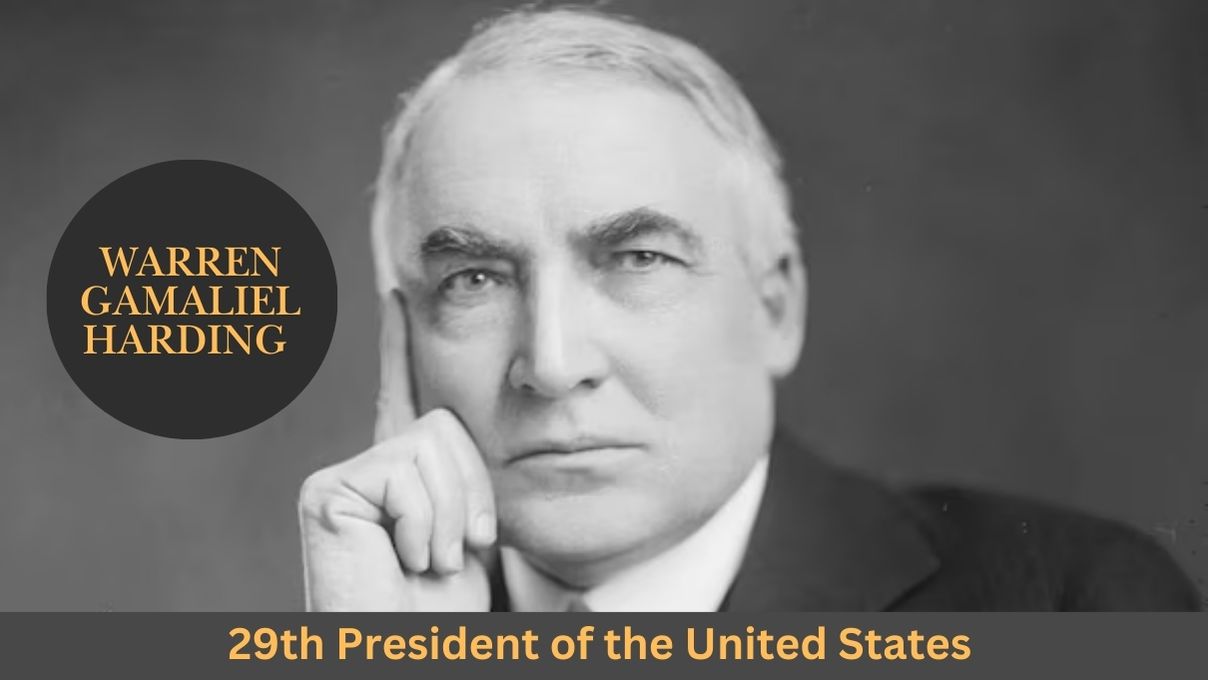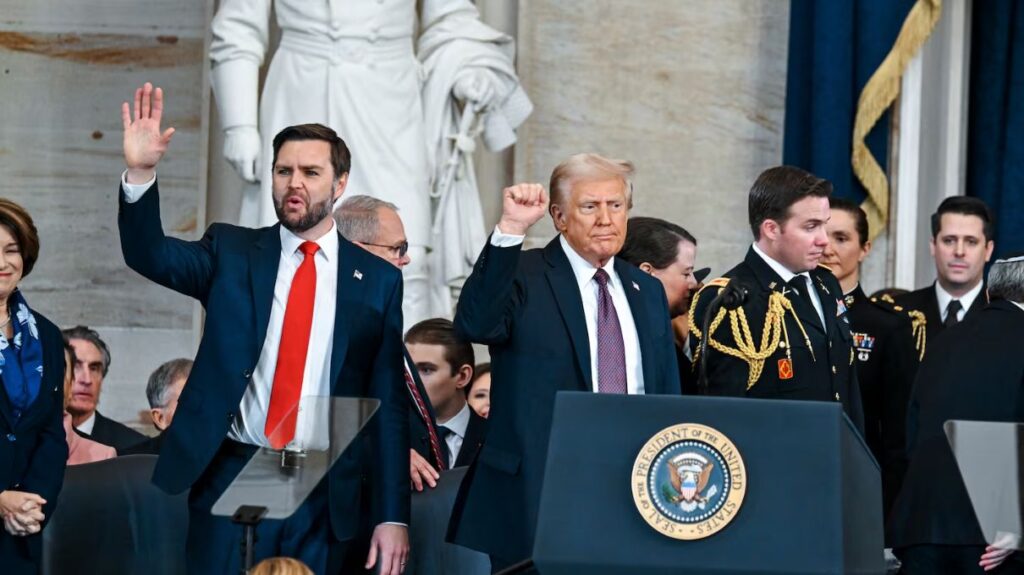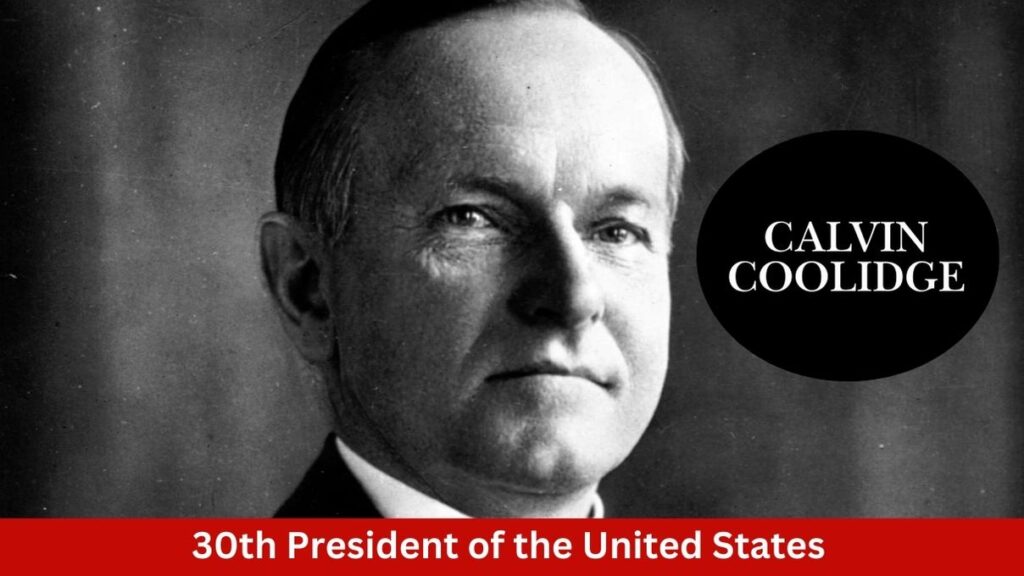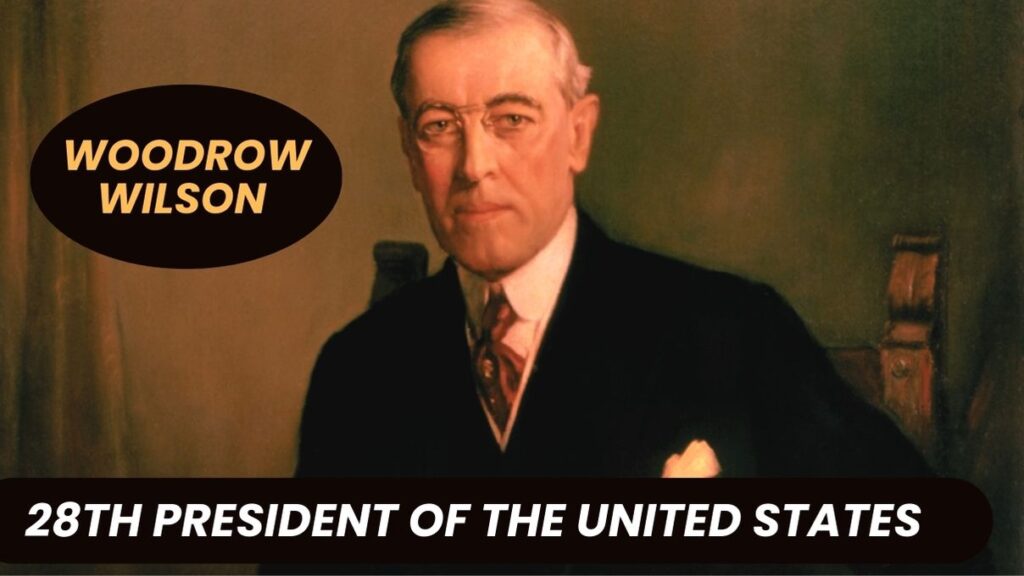Warren Gamaliel Harding, born on November 2, 1865, became the 29th president of the United States, holding office from 1921 until his passing in 1923. As a member of the Republican Party, Warren Gamaliel Harding enjoyed significant popularity during his presidency. However, his reputation faced a sharp decline after his death, largely due to various scandals, most notably the Teapot Dome scandal and an extramarital affair with Nan Britton, which surfaced posthumously and severely impacted his legacy.
Raised in rural Ohio, Warren Gamaliel Harding spent most of his life in his home state, leaving only for his political career. In his early years, Harding purchased a small local newspaper, The Marion Star, which he gradually developed into a thriving publication. His first foray into politics began in the Ohio State Senate, where he served from 1900 to 1904, later becoming lieutenant governor. Although he lost the race for Ohio governor in 1910, he was later elected to the U.S. Senate in 1914, the first time Ohio’s senators were chosen by direct election.
Warren Gamaliel Harding the 29th president of the
Warren Gamaliel Harding journey to the presidency started with his 1920 bid for the Republican nomination, despite being considered an unlikely candidate. When the convention hit a deadlock among the main contenders, Harding gradually gained support and was finally nominated on the tenth ballot. His campaign was unique—he opted for a “front porch campaign,” speaking directly to visitors in his hometown of Marion rather than traveling extensively. With a pledge to return to the stability of the pre–World War I era, Harding resonated with the public and secured a landslide victory over Democratic candidate James M. Cox, marking him as the first sitting senator to become president.
Warren Gamaliel Harding presidency included notable appointments to his cabinet, placing respected figures such as Andrew Mellon as Secretary of the Treasury, Herbert Hoover as Secretary of Commerce, and Charles Evans Hughes as Secretary of State. A highlight of his foreign policy achievements was the Washington Naval Conference in 1921–1922, a groundbreaking initiative that brought together the world’s leading naval powers to agree on limitations, creating a framework that influenced naval policy for a decade. In domestic matters, Harding showed leniency toward political dissenters, releasing individuals imprisoned for opposing World War I.
Warren Gamaliel Harding term was abruptly cut short in 1923 when he died of a heart attack while on a western tour in San Francisco. Vice President Calvin Coolidge succeeded him. At the time of his death, Harding was one of the most well-regarded presidents in history, but his legacy would soon be marred. Following his death, several scandals came to light, with the most damaging being the infamous Teapot Dome scandal.
This incident involved Warren Gamaliel Harding Secretary of the Interior, Albert B. Fall, who accepted bribes in exchange for leasing Navy petroleum reserves to private companies. Fall became the first U.S. cabinet member to be convicted of corruption. Another blow to Harding’s administration was the corruption trial involving Attorney General Harry Daugherty, though Daugherty was ultimately acquitted. Nevertheless, these events cast a shadow over Harding’s administration and severely impacted his posthumous reputation.
Warren Gamaliel Harding personal life also added to the controversy, with the revelation of an extramarital relationship with Nan Britton. Britton, who went on to publish a memoir detailing the affair, claimed to have had a child with Harding, which contributed to the scandalous image of his private life.
As a result of these scandals and personal controversies, Warren Gamaliel Harding reputation took a significant downturn in the years following his presidency. For much of the 20th century, historians often ranked him among the least effective U.S. presidents. Yet, in recent decades, some historians have re-evaluated Harding’s presidency, acknowledging his achievements and efforts in foreign policy and cabinet appointments, while also noting the limitations and issues that plagued his administration.
Warren Gamaliel Harding: Early Life and Career
Childhood and Education
Warren Gamaliel Harding was born on November 2, 1865, in Blooming Grove, Ohio. The eldest of eight children, he was affectionately called “Winnie” by his family. His father, George Tryon Harding, known as Tryon, was a farmer and educator who later transitioned into medicine. Tryon’s journey to becoming a doctor involved both an apprenticeship and a year in medical school. Harding’s mother, Phoebe Elizabeth Harding, was a licensed midwife. Warren’s lineage traced back to early settlers in Massachusetts from England and included ancestors from Wales, Scotland, and the Netherlands.
There were rumors in Blooming Grove that Warren Gamaliel Harding had African American heritage, which were allegedly started by a thief seeking revenge against the family. However, genetic testing in 2015 revealed there was no African ancestry within four generations, putting these rumors to rest.
In 1870, the Warren Gamaliel Harding family moved to Caledonia, Ohio, where Tryon purchased a local newspaper, The Argus. Warren, at only eleven years old, began learning the newspaper business, marking the start of his lifelong association with journalism.
Editor
At age 14, Warren Gamaliel Harding enrolled at Ohio Central College in Iberia, where he showcased his budding journalistic talent by creating a small newspaper called The Iberia Spectator. After graduating in 1882, he joined his family in Marion, Ohio. He soon tried his hand at teaching and insurance, but it was the newspaper business that captured his interest. In 1884, he bought The Marion Star, a struggling local paper, with financial help from his father. Through sheer determination and entrepreneurial skill, Warren Gamaliel Harding transformed The Marion Star into a thriving publication, even amid competition and political challenges.

Warren Gamaliel Harding success was attributed to his charm, perseverance, and his ability to adapt his editorial stance to attract advertisers, ensuring The Marion Star gained a prominent position in Marion. By promoting local businesses and investing in the town’s growth, Warren Gamaliel Harding not only expanded his newspaper’s reach but also his influence within the community. His deep ties to Marion and its residents shaped his reputation as a relatable, community-oriented leader
a characteristic that would later support his political ambitions.
Warren Gamaliel Harding dedication to The Marion Star laid the foundation for his political career, demonstrating his commitment to public service and his ability to connect with the people he served.
Rising politician (1897–1919)
Warren Gamaliel Harding riding’s journey from state senator to rising U.S. politician showcases a gradual climb marked by his amicable style and political skill, which eventually positioned him as a contender in the national arena. Here’s an outline of Harding’s ascent and his strategic choices along the way:
1. State Senator and Local Influence (1899–1905)
- Entry into State Politics: Warren Gamaliel Harding political career began with a successful bid for the Ohio Senate in 1899, supported by both key state figures like Senator Mark Hanna and his initial mentor, Senator Joseph Foraker. Known for his calm demeanor and humility, Harding quickly became a popular figure in the Ohio Republican Party.
- Two-Term Service: Unusual for the time, Warren Gamaliel Harding secured a second term in the Ohio Senate. This experience helped him build influential relationships and gain a reputation as a steady and uncontroversial lawmaker. His success in the state legislature laid a foundation for future political ambitions.

- Navigating Patronage and Favors: Like many politicians of his time, Warren Gamaliel Harding engaged in the era’s patronage practices. His efforts to secure a job for his sister and accept favors reflected the norms of the period. Harding’s actions mirrored the expectations of political loyalty, which were both acceptable and beneficial to his career.
2. Lieutenant Governor Bid and Political Alliances (1903–1905)
- Lieutenant Governor Nomination: When Warren Gamaliel Harding first attempted to run for Ohio governor in 1903, prominent figures like Hanna and George Cox viewed him as unelectable and persuaded him to run for lieutenant governor instead, alongside gubernatorial candidate Myron T. Herrick. This “Four-H ticket” won decisively, securing both Herrick’s and Harding’s positions.
- A Strategic Career Move: Serving as lieutenant governor, Warren Gamaliel Harding used his position to expand his network within the state Senate and to cultivate alliances that would support him in future campaigns. Though Herrick’s decisions during his term alienated some voters, Harding remained likable and unscathed by major controversies.
3. State Republican Leader and a Foiled Gubernatorial Ambition (1908–1912)
- Endorsements and Shifting Support: Warren Gamaliel Harding strategic shift in 1908 from supporting Foraker to endorsing William Howard Taft highlighted his pragmatic approach. By aligning with Taft, he avoided being swept up in Foraker’s political downfall.
- Rising to State Leadership: Though he lost a bid for Ohio governor in 1910, Warren Gamaliel Harding demonstrated resilience and continued his upward trajectory. During the divisive Republican primaries of 1912, Harding again chose the party over personal ambition, nominating Taft for the presidency—a decision that reinforced his loyalty to the GOP, even as the Republican vote split between Taft and Theodore Roosevelt.
4. U.S. Senator and National Stature (1914–1919)
- Victory in a Divided State: In 1914, Warren Gamaliel Harding won the Republican primary over Foraker and then faced Democrat Timothy Hogan in the general election. Harding’s moderate stance and non-confrontational campaign style, even amid anti-Catholic sentiments leveraged by other Republicans, contributed to his victory.
- Senatorial Service and Influential Positions: As senator, Warren Gamaliel Harding was known for his cautious, conservative votes and support for key issues like prohibition and women’s suffrage—each strategically timed to reflect public sentiment. His support for the war resolution in 1917 and subsequent alignment with the Espionage Act highlighted his commitment to national interests over ideological divides.
- Opposition to the Treaty of Versailles: Warren Gamaliel Harding vocal stance against President Wilson’s Treaty of Versailles and the League of Nations marked his national prominence. His argument that Article X would limit U.S. sovereignty resonated with many senators, solidifying his image as a thoughtful, moderate voice on international issues.
Warren Gamaliel Harding ability to balance conservative loyalty with a moderate appeal positioned him as a central figure in Republican politics by the end of the 1910s. His path to the presidency would soon open as he capitalized on both his reputation and his carefully cultivated network, stepping onto the national stage as a unity candidate with wide appeal.
Presidential election of 1920
The 1920 U.S. presidential election was a pivotal event that marked a significant shift in American politics, with Warren G. Harding emerging as the Republican nominee and eventually securing a landslide victory. This election was characterized by the end of World War I, public dissatisfaction with the Democratic administration of Woodrow Wilson, and a desire for a return to what Warren Gamaliel Harding called “normalcy.” Here’s a breakdown of the key events in the primary campaign, convention, general election campaign, and the results that shaped this historic election.
Primary Campaign
After Theodore Roosevelt’s unexpected death in 1919, numerous Republican candidates emerged, including General Leonard Wood, Illinois Governor Frank Lowden, and Ohio Senator Warren G. Warren Gamaliel Harding , among others. Although Harding was interested in the presidency, his initial motivation was to maintain control over Ohio’s Republican politics and secure his Senate re-election. His low-key announcement in December 1919 positioned him as an acceptable candidate to the party’s conservative “Old Guard” faction, which viewed other candidates, like Wood and Lowden, as too progressive or independent. Harding’s campaign manager, Harry Daugherty, aimed to present Harding as a compromise candidate if the convention deadlocked, relying on a network of supporters across states.
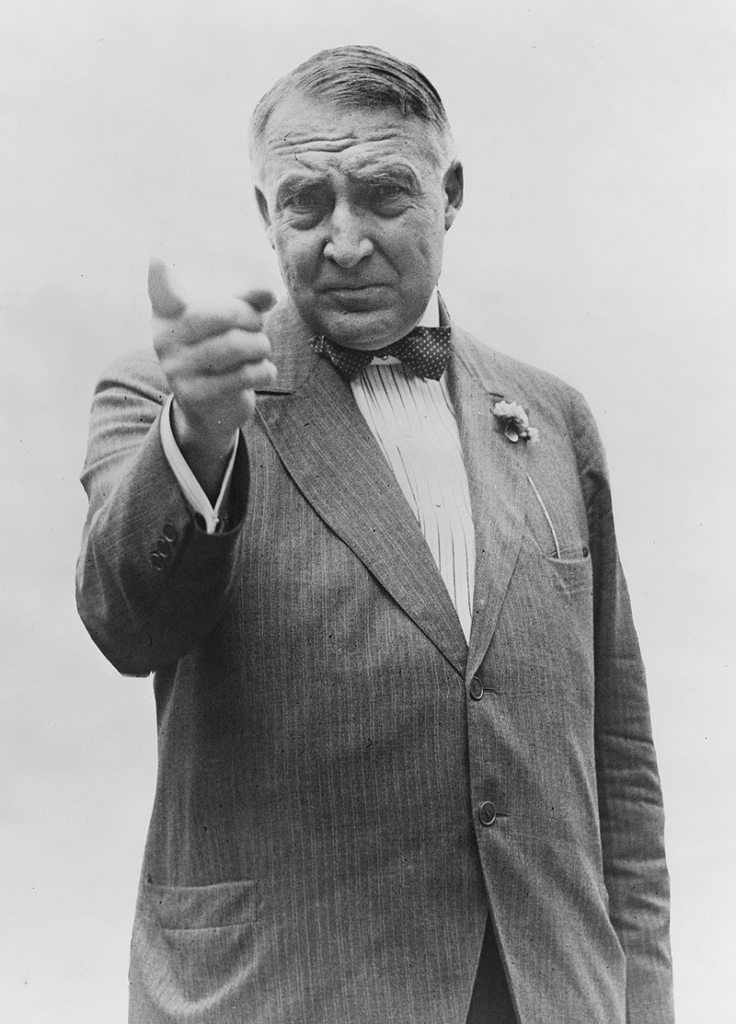
Warren Gamaliel Harding campaign in Ohio, however, was less than stellar. Although he won the Ohio primary, his margin was narrow, and he performed poorly in Indiana, leading him to consider withdrawing. Florence Harding, his wife, intervened, encouraging him to persist until the convention. Harding soon delivered a powerful speech in Boston, advocating for stability and a return to “normalcy,” a message that resonated with a weary public.
Convention Deadlock and “Smoke-Filled Room”
The 1920 Republican National Convention in Chicago faced a contentious start, as factions within the party were divided over candidates like Wood and Lowden due to accusations of excessive campaign spending. Women delegates were present, marking a historic moment as the Nineteenth Amendment approached ratification, granting women the right to vote. Warren Gamaliel Harding, whose campaign was floundering in the primaries, became a dark horse at the convention, gaining traction as a compromise candidate due to dissatisfaction with other leading candidates.
In a famous event known as the “smoke-filled room” meeting, party leaders gathered to find a nominee. While no formal agreement was reached, discussions leaned towards Warren Gamaliel Harding as the best option, especially to secure the critical Ohio vote against a likely Democratic opponent, Ohio Governor James M. Cox. On June 12, after several ballots, Harding gradually rose to the lead, eventually securing the nomination on the tenth ballot. Coolidge, the popular Massachusetts Governor, was nominated for vice president, adding appeal to the ticket.
General Election Campaign and Strategy
Warren Gamaliel Harding chose a “front porch” campaign strategy, addressing supporters from his home in Marion, Ohio, much like President William McKinley had in 1896. Cox and his running mate, Franklin D. Roosevelt, adopted a contrasting approach by traveling extensively and delivering speeches across the country. Harding’s campaign emphasized a “return to normalcy,” a slogan capturing the public’s desire for stability after World War I and Wilson’s idealistic policies, including the League of Nations.

The Republican National Committee (RNC) invested in an extensive advertising campaign led by Albert Lasker, who employed cutting-edge strategies, including sound recordings, telemarketing, and newsreels. This campaign was one of the first to utilize modern advertising techniques, helping Warren Gamaliel Harding message reach a wider audience. Harding’s refusal to commit to Wilson’s League of Nations plan but his openness to a modified “association of nations” appealed to Americans skeptical of entangling alliances. Additionally, rumors of Harding’s mixed-race ancestry, circulated by opponents, were rebuffed by his campaign.
Election Outcome
On November 2, 1920, Warren Gamaliel Harding achieved a decisive victory, winning 60.2% of the popular vote and 404 electoral votes, while Cox garnered 34% and 127 electoral votes. Eugene V. Debs, the Socialist candidate running from prison, received 3% of the vote. The election results reflected a strong public preference for a Republican leadership shift, with the party also gaining majorities in Congress. Harding’s resounding win underscored the nation’s fatigue with progressive reforms and foreign entanglements, setting a course for conservative governance throughout the 1920s.
The presidency of Warren G. Harding (1921–1923)
The presidency of Warren G. Harding (1921–1923) was marked by significant events and a mixture of achievements and controversies. Here’s an overview focusing on his administration’s foreign policy, domestic initiatives, and challenges.
1. Inauguration and Key Appointments
Warren Gamaliel Harding was inaugurated as the 29th president of the United States on March 4, 1921, in a low-key ceremony. Harding’s address focused on a call for self-reliance over governmental dependency, an early signal of his limited-government approach. After a vacation in Texas and a visit to the Panama Canal, Harding returned to Washington to assemble a cabinet of notable appointees.
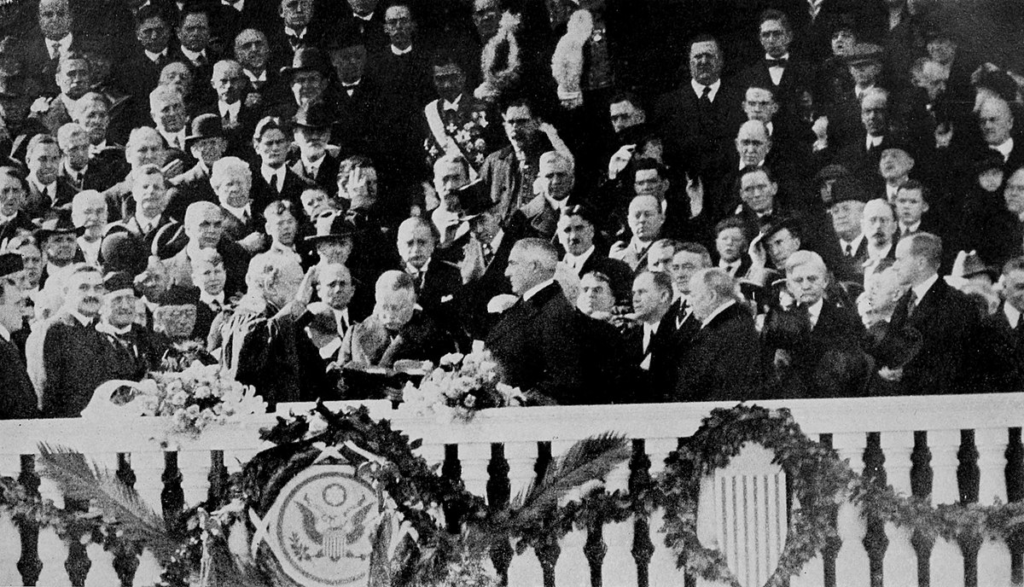
Charles Evans Hughes was chosen as Secretary of State, and Andrew Mellon, one of the nation’s wealthiest men, became Treasury Secretary. Warren Gamaliel Harding also appointed Herbert Hoover as Secretary of Commerce. However, some choices were less fortunate. His selection of Albert B. Fall as Interior Secretary and Harry M. Daugherty as Attorney General would later become controversial due to their involvement in scandals, including the infamous Teapot Dome.
2. Foreign Policy and Relations
Warren Gamaliel Harding foreign policy was heavily influenced by Secretary Hughes, signaling a departure from President Wilson’s League of Nations strategy. Harding made clear that the U.S. would not join the League, and instead, in 1921, passed the Knox–Porter Resolution, officially ending America’s involvement in World War I and establishing peace treaties with Germany, Austria, and Hungary. Hughes managed to keep diplomatic relations with other countries, even though the U.S. remained isolated from political engagements in the League.
In Latin America, Warren Gamaliel Harding adopted a careful approach. While withdrawing troops from Cuba in 1921, he maintained military presence in other regions like Nicaragua and Haiti. The administration also pursued peace efforts with Colombia, compensating it with $25 million for past U.S. actions in the Panamanian region, which helped ease tensions. Although Harding held a non-interventionist stance, he did not renounce the Monroe Doctrine, particularly regarding nations near the Panama Canal, demonstrating a balance between isolationist ideals and geopolitical interests.
3. Domestic Policy and Economic Measures
Domestically, Warren Gamaliel Harding presidency coincided with an economic downturn caused by the transition from a wartime to a peacetime economy. He urged Congress to reduce taxes, raise agricultural tariffs, and support new sectors like highways, aviation, and radio. In June 1921, Congress established the Bureau of the Budget, and Harding appointed Charles Dawes as its director to streamline government spending. Harding also supported Treasury Secretary Mellon’s tax-cutting measures, though disagreements within Congress delayed these efforts.
By focusing on lowering income taxes, Warren Gamaliel Harding administration aimed to increase public spending and stimulate economic growth, an approach that foreshadowed the prosperity of the 1920s. By the end of Harding’s term, unemployment had fallen significantly, and the economy was beginning to recover, laying groundwork for the economic boom later in the decade.
4. Embracing New Technologies and Infrastructure Development
Warren Gamaliel Harding administration promoted modernization, especially in transportation and communication. He signed the Federal Highway Act of 1921, allocating $162 million to improve U.S. highways, which would support a growing automobile industry. He also encouraged radio and aviation advancements. Secretary Hoover took the lead in organizing conferences to address radio frequency licensing and aviation safety. Although radio and aviation legislation were not fully developed until the later 1920s, Harding’s proactive stance marked a key moment in the regulatory evolution of emerging industries.
5. Business, Labor, and Challenges
Warren Gamaliel Harding viewed business as essential to America’s prosperity and believed that government should assist business growth. He was wary of organized labor and its potential conflicts with business interests. Harding convened an unemployment conference in 1921, urging cooperation between businesses and labor, but no major legislation emerged from this meeting. Meanwhile, Commerce Secretary Hoover’s expanded department supported private-sector initiatives, embodying Harding’s commitment to limited government intervention.

Warren Gamaliel Harding administration faced mounting challenges, notably from corruption within his cabinet. Scandals, especially the Teapot Dome involving Albert Fall and the Department of the Interior, would later tarnish Harding’s legacy. Despite his popularity, his sudden death in 1923 prevented him from confronting these crises, and his presidency remains a mix of economic progress and political controversy.
Warren Gamaliel Harding time in office highlighted both the potential and pitfalls of a government that leaned toward deregulation and business-friendly policies. His stance on foreign relations and domestic issues showed his desire to stabilize the country, but scandals within his administration clouded his accomplishments.
Death and Funeral
In late July 1923, President Warren G. Harding became ill after a speech in Seattle, initially suspected to have suffered from stomach issues, but later thought to involve heart complications. Traveling to San Francisco for treatment, his health temporarily improved but then deteriorated sharply. On August 2, 1923, Warren Gamaliel Harding passed away in his hotel room at age 57. His sudden death stunned the nation, as many admired and followed his leadership. Harding’s body was transported across the country, with millions lining the tracks as he was brought to lie in state in the U.S. Capitol, followed by burial in his hometown, Marion, Ohio. Notable figures like Thomas Edison and Henry Ford attended his funeral.

Scandals Unveiled:
The image of Warren Gamaliel Harding administration was tarnished by scandals revealed after his death. Harding had appointed friends and allies to various federal positions, some of whom served effectively, but others proved corrupt, forming what became known as the “Ohio Gang.” Key scandals, such as those involving the Veterans’ Bureau, exposed deep-seated corruption. The Bureau’s director, Charles R. Forbes, misused government funds intended for veterans’ hospitals, engaging in contracts with inflated costs and kickbacks. Forbes eventually fled to Europe but returned and was later imprisoned.
Teapot Dome Scandal:
The infamous Teapot Dome scandal came to light shortly after Warren Gamaliel Harding death, involving illegal oil lease deals by Interior Secretary Albert B. Fall. Fall had transferred oil reserves from the Navy to the Interior Department, awarding leases without competitive bidding to close associates. It was later uncovered that Fall had received large sums from oil companies in exchange for favorable treatment. Fall’s actions led to his conviction, marking him as the first U.S. Cabinet member imprisoned for crimes in office, leaving a lasting impact on Harding’s legacy.

Justice Department Corruption:
Attorney General Harry Daugherty’s actions drew scrutiny, especially his association with Jess Smith, who accepted bribes from bootleggers during Prohibition. Although Daugherty denied involvement, mounting evidence and Senate investigations forced his resignation. Daugherty narrowly escaped conviction, but public perception of him and the Warren Gamaliel Harding administration was permanently damaged.
Personal Scandals:
Warren Gamaliel Harding private life also faced exposure after his death. Letters revealed a 15-year affair with Carrie Fulton Phillips, and Nan Britton published a book claiming Harding fathered her daughter. DNA tests in 2015 confirmed the paternity, adding further intrigue to Harding’s personal history.
Historical views
Warren Gamaliel Harding historical reputation has undergone significant changes over the decades since his presidency. Upon his death in 1923, he was mourned not just in the U.S. but globally, with many referring to him as a man of peace. American journalists praised him, and hagiographic accounts soon followed, portraying him positively despite the impending scandals that would taint his legacy.
However, as details of corruption within his administration emerged, public perception shifted dramatically. Works like William Allen White’s Masks in a Pageant and Samuel Hopkins Adams’ Revelry depicted Harding as weak and ineffectual. The publication of Nan Britton’s book revealing their affair further damaged his reputation. Presidents Coolidge and Hoover, seeking to distance themselves from Harding, were reluctant to honor his legacy.

In the years following his presidency, Warren Gamaliel Harding reputation was solidified as one of the worst in American history, particularly after a 1948 Harvard poll ranked him last among 29 presidents. Critics, including Robert Ferrell and John Dean, have pointed to sensational accounts and a lack of substantive research as contributing factors to this negative perception.
In recent years, some historians have begun to reassess Warren Gamaliel Harding presidency. Bruce Bueno de Mesquita and Alastair Smith ranked him first in terms of fewest wartime deaths and highest income growth during his administration. Author John Murray argued that Harding deserves more credit, suggesting his administration had concrete accomplishments that surpassed many of his contemporaries.
Despite this reassessment, the fundamental view of Warren Gamaliel Harding as a flawed president remains entrenched. Scholars continue to grapple with the consequences of his inaction regarding corrupt officials and the overall integrity of his administration. Ultimately, while some recent scholarship seeks to rehabilitate Harding’s legacy, the scars of the scandals and the perception of his leadership persist.

